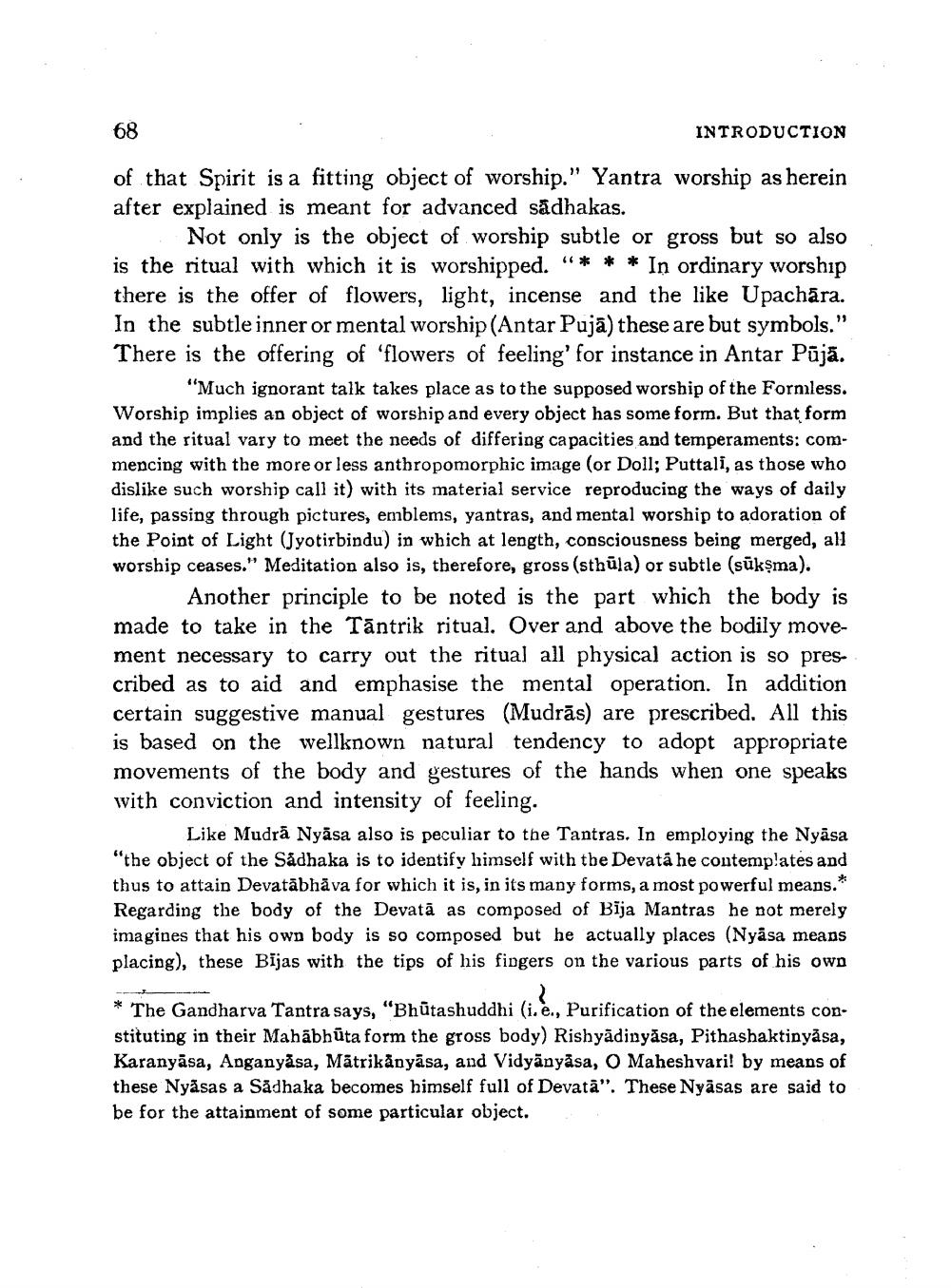________________
68
INTRODUCTION
of that Spirit is a fitting object of worship." Yantra worship as herein after explained is meant for advanced sådhakas.
Not only is the object of worship subtle or gross but so also is the ritual with which it is worshipped. “* * * In ordinary worship there is the offer of flowers, light, incense and the like Upachāra. In the subtle inner or mental worship (Antar Pujā) these are but symbols." There is the offering of 'flowers of feeling' for instance in Antar Pūjā.
"Much ignorant talk takes place as to the supposed worship of the Formless. Worship implies an object of worship and every object has some form. But that form and the ritual vary to meet the needs of differing capacities and temperaments: commencing with the more or less anthropomorphic image (or Doll; Puttali, as those who dislike such worship call it) with its material service reproducing the ways of daily life, passing through pictures, emblems, yantras, and mental worship to adoration of the Point of Light (Jyotirbindu) in which at length, consciousness being merged, all worship ceases." Meditation also is, therefore, gross (sthūla) or subtle (sūkşma).
Another principle to be noted is the part which the body is made to take in the Tāntrik ritual. Over and above the bodily movement necessary to carry out the ritual all physical action is so prescribed as to aid and emphasise the mental operation. In addition certain suggestive manual gestures (Mudrās) are prescribed. All this is based on the wellknown natural tendency to adopt appropriate movements of the body and gestures of the hands when one speaks with conviction and intensity of feeling.
Like Mudrā Nyāsa also is peculiar to the Tantras. In employing the Nyasa "the object of the Sadhaka is to identify himself with tbe Devata he contemplates and thus to attain Devatābhāva for which it is, in its many forms, a most powerful means.* Regarding the body of the Devatā as composed of Bīja Mantras he not merely imagines that his own body is so composed but he actually places (Nyasa means placing), these Bījas with the tips of his fingers on the various parts of his own
* The Gandharva Tantra says, "Bhūtashuddhi (i.e., Purification of the elements constituting in their Mahābhūta form the gross body) Rishyādinyāsa, Pithashaktinyåsa, Karanyása, Anganyåsa, Mātrikänyāsa, and Vidyānyasa, O Maheshvari! by means of these Nyāsas a Sadhaka becomes himself full of Devatā". These Nyāsas are said to be for the attainment of some particular object.




